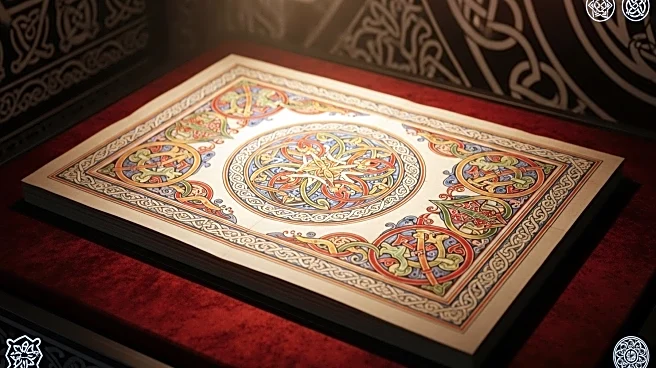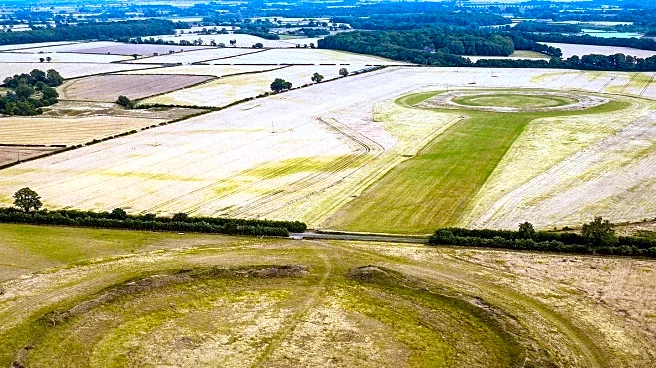What's Happening?
Recent research by Dr. Victoria Whitworth suggests that the Book of Kells, a renowned medieval manuscript, may have originated in a monastery in Portmahomack, Easter Ross, Scotland, rather than the traditionally believed locations of Iona or Kells. This challenges the long-standing assumption that the manuscript was created on the island of Iona before being moved to Kells in Ireland. Whitworth's findings indicate that the Picts, known for their sophisticated Christian sculpture, may have been responsible for the manuscript's creation. The research highlights the movement of holy men and materials across Ireland, Britain, and the continent during the manuscript's creation period, complicating the task of pinpointing its exact origin.
Why It's Important?
This revelation could significantly alter the understanding of early medieval Scotland and the cultural contributions of the Picts. Traditionally viewed as mysterious and remote, the Picts' potential role in creating such a significant manuscript could reshape perceptions of their cultural and artistic capabilities. The Book of Kells is a vital piece of cultural heritage, and its reattribution to Pictish Scotland could enhance the region's historical significance. This finding also underscores the interconnectedness of early medieval societies across the British Isles, highlighting the exchange of artistic and cultural influences.
What's Next?
Dr. Whitworth's research will be published in her forthcoming book, 'The Book of Kells: Unlocking the Enigma,' which may prompt further scholarly debate and investigation into the origins of the manuscript. This could lead to more archaeological and historical research in Portmahomack and other Pictish sites, potentially uncovering additional evidence of the Picts' contributions to medieval art and literature. The academic community may also revisit other historical assumptions about the movement and influence of early medieval cultures in the British Isles.
Beyond the Headlines
The potential reattribution of the Book of Kells to Pictish Scotland could have broader implications for understanding the cultural dynamics of early medieval Europe. It challenges the narrative of cultural dominance by more well-documented societies like the Irish and Northumbrians, suggesting a more complex web of cultural interactions. This could lead to a reevaluation of other historical artifacts and their origins, promoting a more nuanced understanding of the period.












